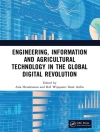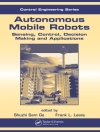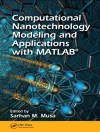Mapping and Modeling Weather and Climate with GIS is a contributed volume of 23 chapters from leading climatologists, meteorologists, and other experts about how geospatial cartography and analysis helps to advance atmospheric science research. Coverage includes data and software resources, data representation, observations, modeling, data-model integration, web services, and the areas of current and potential cross-fertilization of atmospheric and geospatial sciences. Providing both the concepts and practices of mapping and modeling projects, the book is useful to novices using GIS on weather and climate projects. Practitioners and managers will gain a clear picture of the advances in GIS for atmospheric sciences and appreciate the helpful lists of available geospatial resources.
Spis treści
Table of Contents Foreword About the authors Acknowledgments Dedication Part 1 Representations of atmospheric phenomena Introduction Chapter 1 Multidimensional data in Arc GIS Chapter 2 Meteorological data in a geodatabase Chapter 3 The shape of earth: Spatial referencing in weather and climate models Part 2 Observations Introduction Chapter 4 Weather radar: Urban application Chapter 5 Atmospheric satellite observations and GIS Chapter 6 Climatological products Chapter 7 Social media Part 3 Models Introduction Chapter 8 Exploring future climates in a GIS Chapter 9 Downscaling of climate models Chapter 10 Climate applications at the NOAA Climate Prediction Center (CPC) Chapter 11 Particle tracking in ocean and atmospheric studies Part 4 Integrated analyses of models and observations Introduction Chapter 12 Joplin tornado damage analysis Chapter 13 Integrating weather, climate, and demographic data Chapter 14 Integrating satellite and ground observations with models for weather studies Chapter 15 Lightning applications Part 5 Web services Introduction Chapter 16 Weather-based web map services Chapter 17 Interoperability interfaces Chapter 18 METOC web services Part 6 Tools and resources Introduction Chapter 19 Net CDF and related information sources Chapter 20 Net CDF tools Chapter 21 Space-time visualization Chapter 22 Python scripting Chapter 23 The Weather and Climate Toolkit Afterword Index
O autorze
Lori Armstrong is Global Industry Manager for Water/Wastewater, Water Resources at Esri. She was editor of the book Hydraulic Modeling and GIS (Esri Press 2012).












